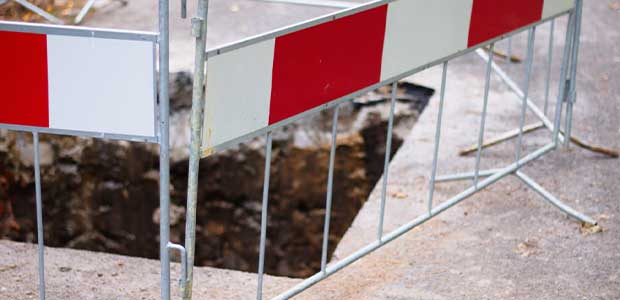
Watch Your Step: Protecting Workers from Falling into Holes
What measures should employers and workers take to stay safe around holes?
- By Alex Saurman
- Feb 21, 2023
It only takes a single step for a worker’s life to change.
In many industries, there may be holes in a working surface that pose a risk to employees. At a worksite in Illinois, an electrician sustained fatal injuries when they fell through a hole in December 2021. According to OSHA, the 50-year-old electrician and general foreman were simply “evaluat[ing] the proposed work” when the incident happened.
In this article, we’re going to look at ways to protect workers from falling into holes. But before we do that, if you’re wondering what’s classified as a hole, here’s OSHA’s definition: “A gap or void 2 inches (5.1 cm) or more in its least dimension, in a floor, roof, or other walking/working surface."
If you have a hole at your worksite, make sure it's covered up or guarded. If you’re opting to cover the hole, the National Institute for Occupational Safety and Health (NIOSH) and the Center for Construction Research and Training (CPWR) recommend, in a toolbox talk, to use materials that are .75 inches thick at a minimum. The material—NIOSH and CPWR suggest “plywood, oriented strand board or other materials”—should also be able to hold double the necessary weight.
Once you have your cover, secure it down so no one can trip on it or move it and fall into the hole. If you want to make it stand out more, the toolbox talk also proposes writing “HOLE” or “COVER” on it.
If you choose to use guarding measures, utilize options like a toe-board or railings, per OSHA.
In a letter of interpretation, the agency also noted that for holes at heights of and higher than six feet, protections should include “personal fall arrest systems, covers or guardrail systems.”
With the right actions, falls can be prevented.
About the Author
Alex Saurman is a former Content Editor for Occupational Health & Safety,who has since joined OH&S’s client services team. She continues to work closely with OH&S’s editorial team and contributes to the magazine.